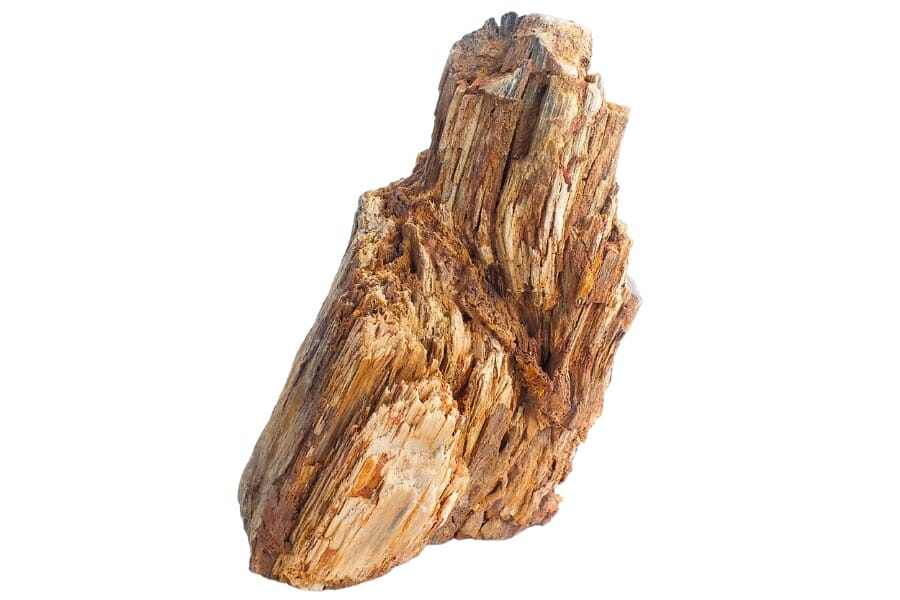Picture a tree that lived millions of years ago, now turned to stone— that’s the beauty that is petrified wood! Colors of red, yellow, and blue are swirled together in intricate patterns on this stone. And holding one is like holding a piece of history in your hands.
With its unique beauty, it’s no wonder why many rockhounds and collectors are going out of their way to find them in the wild. However, finding Missouri petrified wood can be challenging if you don’t have ample guidance. After all, our state’s diverse geography hides these natural treasures so well.
That’s why we created this complete guide to finding petrified wood in Missouri, which includes the sure sites that you can explore. These spots are a testament to our state’s rich geological history. Pack your gear, fuel up your spirit of adventure, and prepare for the thrill of finding your own Missouri petrified wood!
What Is Missouri Petrified Wood
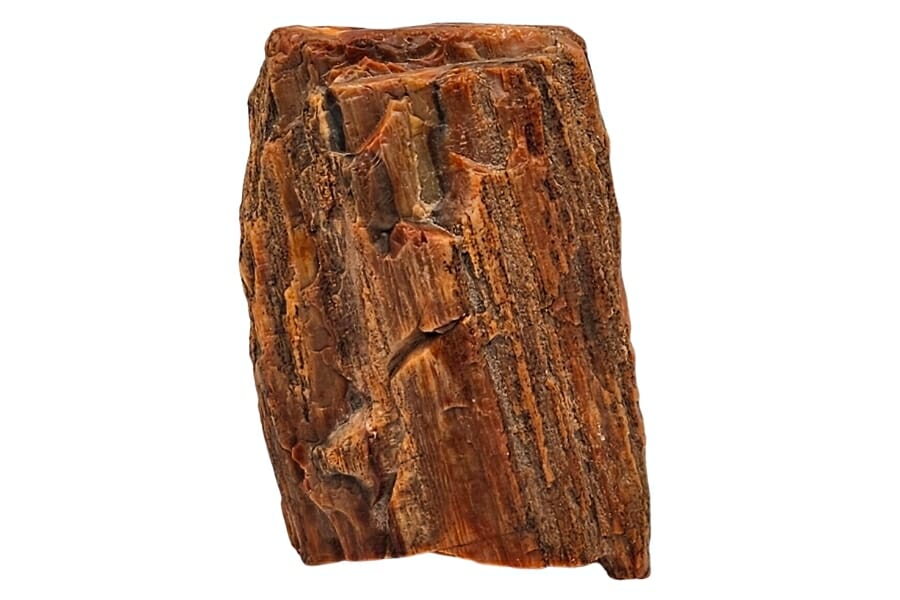
Petrified wood is ancient wood that’s turned into stone as a result of a process called petrification. It starts when a tree falls into an environment rich in sediment and gets buried.
Over millions of years, groundwater rich in minerals like silica seeps into the wood, replacing the organic material cell by cell, while maintaining the original structure. As the minerals harden, they form a stone mold of the wood, creating a beautiful and durable fossil.
The best places to find petrified wood are usually ancient riverbeds, floodplains, or volcanic ash beds, where conditions for preservation were just right. But you don’t have to climb a volcano or dig a riverbed to find these treasures. Missouri, with its rich geological history, is home to petrified wood.
The Types of Petrified Wood Found in Missouri
Before starting your exploration, it’s important to really understand what petrified wood is and how you can identify it, so make sure to read our article on that first. Also, familiarize yourself with the different types of Missouri petrified wood that you might encounter during your search, such as the following:
Coniferous Petrified Wood
Coniferous petrified wood is a fascinating fossil that captures the essence of an ancient conifer tree in stone. Conifers are a type of tree that usually bear cones and have needle-like leaves, like pines or firs.
A piece of coniferous petrified wood often shows patterns that resemble the growth rings of a tree, a sign of how the tree grew each year. Sometimes, you can even see spots that look like knots, where branches used to be. Its colors range from light tan to deep brown, and even black, depending on the minerals that filled in the wood.
What’s really cool about it is how each piece is unique, capturing a moment in the tree’s life from millions of years ago. This type of petrified wood can be found in several places, including right here in our state.
Petrified Fern
While ferns aren’t actually trees and don’t have wood, they can still become petrified. Instead of a tree trunk, the hard, underground stems of ferns, known as rhizomes, are what often turn into stone over millions of years.
These fossils can be smaller than petrified wood and often take on a cylindrical or round shape. And instead of tree rings, you’ll see a complex network of dots and lines in its patterns. These represent the vascular tissue of the fern, the system that carries water and nutrients throughout the plant.
As for color, petrified ferns can vary a lot. They might be brown, red, yellow, or even black, depending on the minerals that filled in the spaces during the petrification process.
- The extensive local experience of our team
- Input from a variety of local rockhounds and rockhound groups
- The difficulty in accessing a location
- Safety and potential hazards when collecting
- Private and public locations
- A desire to include locations for both the experienced and newbie hunters who are just starting out
Using these inputs we think we’ve put together the best list out there for those who love finding petrified wood for our collections!
DON'T MISS OUT ON ANY GREAT FINDS!
While you're out searching for Petrified Wood you're going to find A LOT of other interesting rocks and minerals along the way. The last thing you want to do is toss out something really interesting or valuable. It can be easy to misidentify things without a little guidance.
We've put together a fantastic field guide that makes identifying 140 of the most interesting and valuable rocks and minerals you will find REALLY EASY. It's simple to use, really durable, and will allow you to identify just about any rock and mineral you come across. Make sure you bring it along on your hunt!
The Best Places To Find Petrified Wood In Missouri
There are many great rockhounding sites in Missouri, which is always good news for any collector or rockhound. However, this also makes it hard to pinpoint specifically which of them contain petrified wood. So we did the hard work and scoured our state for the surest sites to find them here:
Always Confirm Access and Collection Rules!
Before heading out to any of the locations on our list you need to confirm access requirements and collection rules for both public and private locations directly with the location. We haven’t personally verified every location and the access requirements and collection rules often change without notice.
Many of the locations we mention will not allow collecting but are still great places for those who love to find beautiful rocks and minerals in the wild without keeping them. We also can’t guarantee you will find anything in these locations since they are constantly changing.
Always get updated information directly from the source ahead of time to ensure responsible rockhounding. If you want even more current options it’s always a good idea to contact local rock and mineral clubs and groups
Missouri River
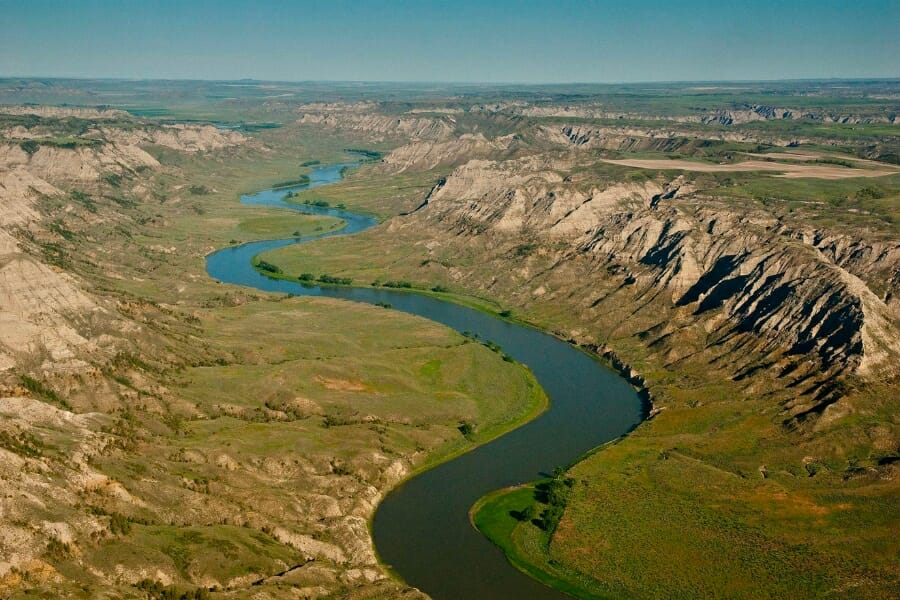
Stretching over 400 miles across our state, the Missouri River is a key part of our landscape. As the longest river in North America, it carries a rich history and geology from its source in Montana all the way to its meeting point with the Mississippi River near St. Louis.
Geographically, the Missouri River snakes through varying landscapes, from the rolling plains in the north, near Kansas City, to the hilly terrain around St. Louis. Along the way, it nourishes farmland, creates beautiful river bluffs, and provides habitat for lots of wildlife.
The river’s geology is as diverse as its terrain. Its banks and bottom carry sediment from thousands of miles away, offering a mixture of sand, clay, and even glacial deposits. In places, the river cuts through limestone and other bedrock, creating unique formations.
Despite this, it’s pretty easy to reach as many towns and cities lie along its path. But always remember to check area-specific rules and regulations on where you can collect in our state. For more detailed information, check out Missouri’s latest collecting guidelines.
Where we found petrified wood in the Missouri River
Make sure to explore the north shoreline of the Missouri River downstream to Wilton where you can find stunning samples of petrified wood.
Dade County
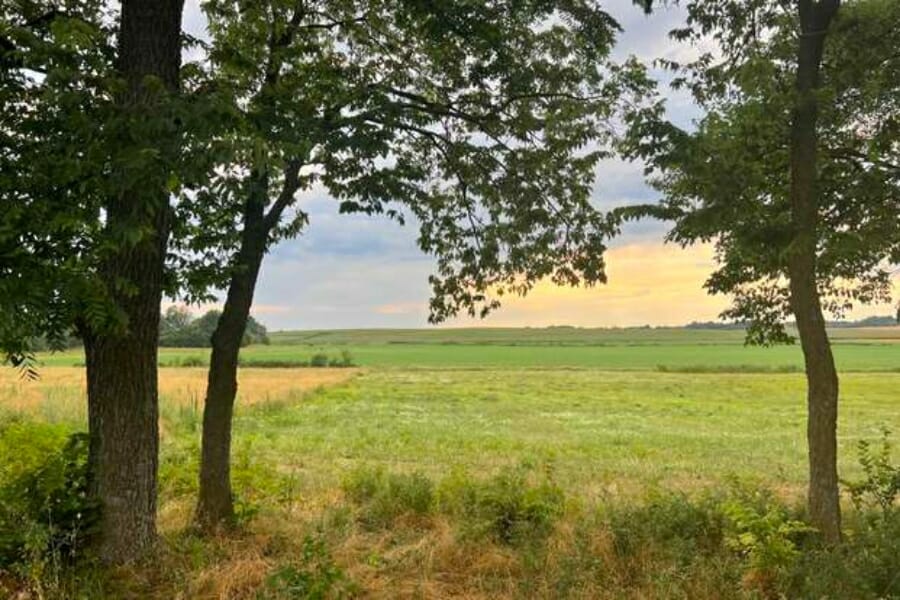
Dade County is a place brimming with natural beauty and rich geology. With a landscape dominated by the Ozark Plateau, its terrain here ranges from gently rolling hills to deep valleys, creating a mix of open grasslands and forested areas. The county is also dotted with numerous creeks and rivers.
Underneath its fertile soils lie layers of limestone and dolomite, types of rock that formed millions of years ago from ancient sea beds. These rocks are often filled with fossils, providing clues about the creatures that lived here long before us.
What’s even better is that going to Dade County is easier than you might think. Just a short drive from major cities like Springfield and Joplin, it’s well-connected by highways.
Where we found petrified wood in Dade County
You can find petrified wood in all of Dade County’s area excavations, quarries, cut banks, and gravel pits.
Mississippi River
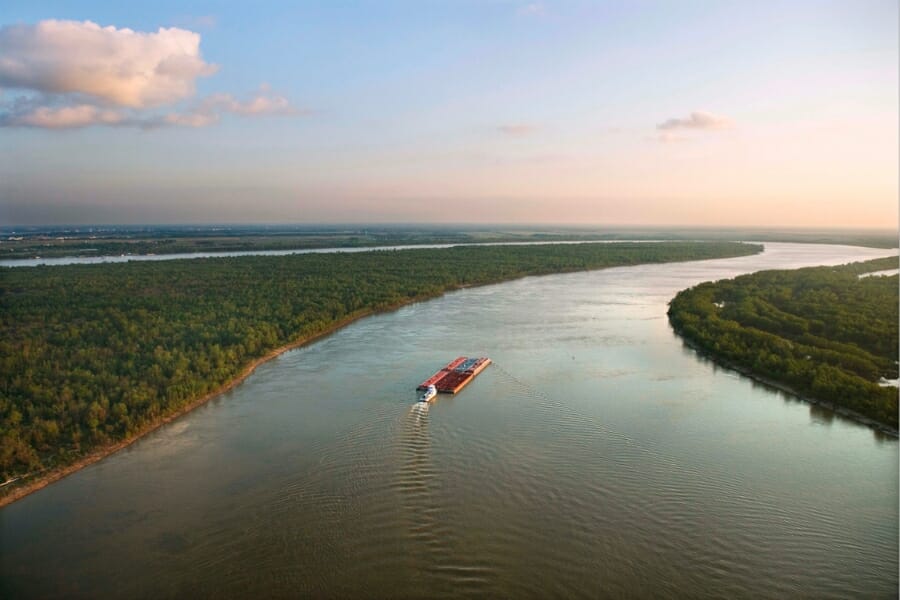
The mighty Mississippi River, one of the world’s major river systems, graces the eastern edge of our state, playing a crucial role in our geography and geology. Flowing southward from its source in Minnesota, it reaches Missouri near the Iowa border and winds its way along the state’s eastern.
The terrain along the Mississippi is diverse, with rolling hills, limestone bluffs, and rich floodplains. This creates a blend of lush farmland, scenic vistas, and diverse habitats for wildlife. A variety of landforms can be found, including oxbow lakes and wetlands, shaped by the river’s flow over thousands of years.
Geologically, the Mississippi River carries a wealth of sediment from its vast drainage basin. This, combined with the local bedrock, offers an intriguing mix of sand, silt, clay, and gravel, with occasional fossil finds. Also, going here is pretty easy as it flows past several towns and cities.
Where we found petrified wood in the Mississippi River
Explore the following areas surrounding the Mississippi River to find petrified wood:
- All Bollinger County gravel pits, road cuts, and excavations extending east through Cape Girardeau County to the Mississippi River
- Area gravels, exposures of Marble Hill east to Mississippi River
Grand River
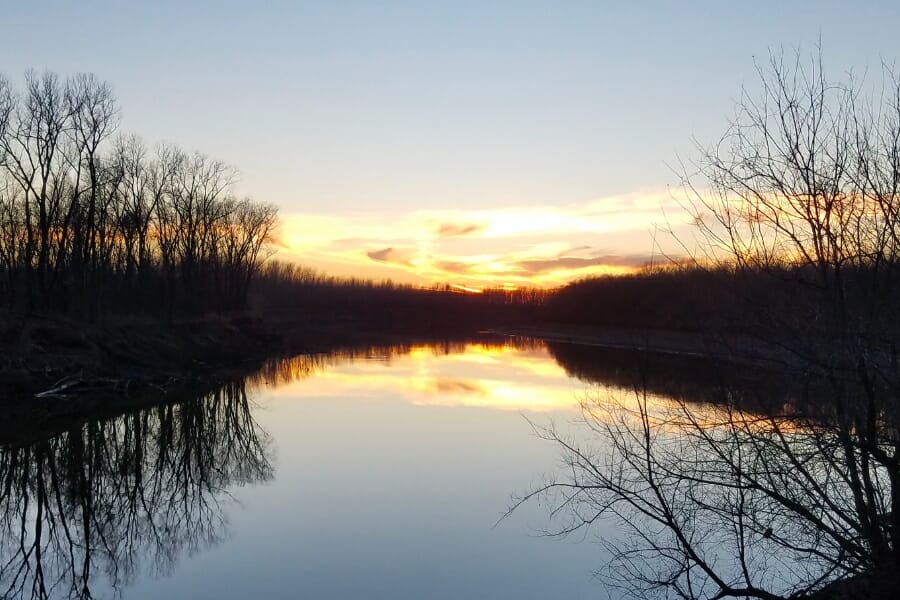
The Grand River is a captivating waterway that begins in Iowa and meanders through the northern part of our state, eventually flowing into the Missouri River. Spanning nearly 200 miles in length, it’s a noteworthy feature in our diverse landscape.
The terrain along the Grand River varies, from the rolling hills to the fertile floodplains near its mouth. It has carved out its own path over thousands of years, creating river bluffs and shaping the land around it. These areas are filled with forests and fields, providing homes for all sorts of plants and animals.
Geologically, it’s a treasure trove of information. The river carries sediment from its vast drainage area, giving us clues about the rocks and soils from upstream. Near the river, you’ll often find layers of limestone and shale, types of rock that were laid down in ancient seas that once covered the region.
Where we found petrified wood in the Grand River
You can find captivating pieces of petrified wood if you explore the gravels along the Grand River in Daviess County.
Cass County
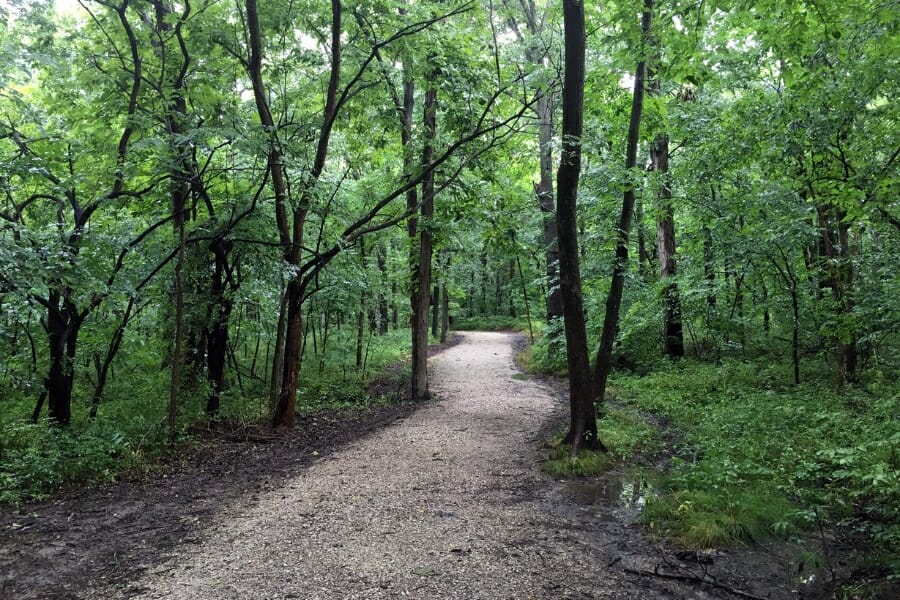
Cass County is a captivating region directly south of the bustling Kansas City metropolitan area. Its geography is diverse, ranging from open prairies to heavily forested areas, and it’s crisscrossed by several creeks and rivers.
Its terrain is predominantly rolling hills, a result of glaciation many thousands of years ago. The soils are a mix of loess, deposited by wind-blown glacial dust, and alluvium, which comes from the river valleys. Together, they create rich farmland that’s perfect for the county’s many farms and ranches.
Geologically, the region is dominated by layers of limestone and shale, ancient sedimentary rocks full of fascinating fossils. And as for accessibility, Cass County is easy to reach. It’s well-served by major highways like I-49 and Route 2.
Where we found petrified wood in Cass County
Explore all the following areas in Cass County if you’re looking for petrified wood:
- Quarry adjacent to South Grand River
- Quarry adjacent to Camp Branch
- Harrisonville area quarries
Other Great Places To Find Missouri Petrified Wood
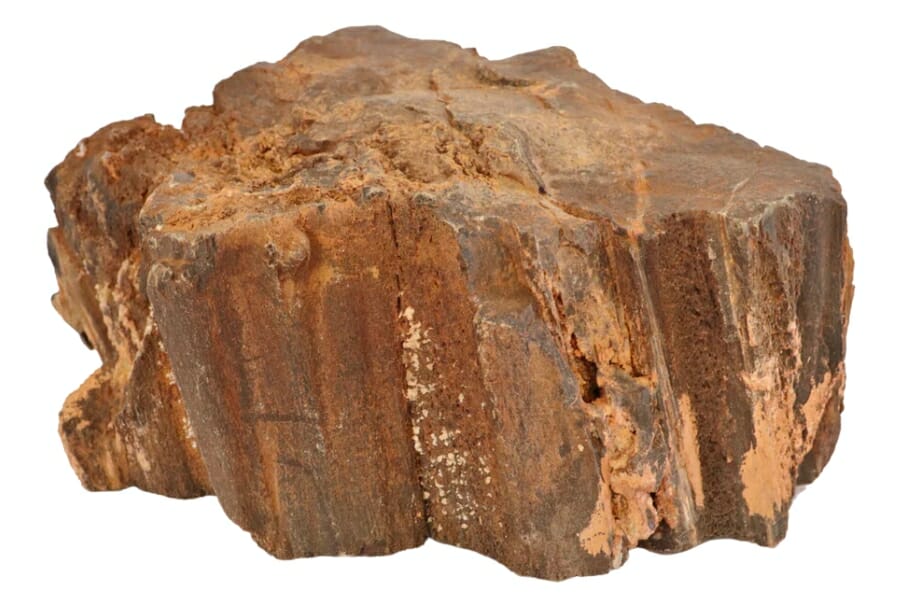
In case you’re looking for more sure sites where you can find petrified wood in Missouri, you may refer to the list of spots we’ve listed below by county.
| County | Location |
| Boone | Columbia area quarries and gravel pits |
| Cape Girardeau | Countywide in area excavations, road cuts, gravel operations |
| Daviess | Countywide in gravel pits, stream cuts, road cuts, railroad cuts, and excavations |
| Gentry | Countywide in area glacial drift gravels, excavations, pits |
| Grundy | Countywide in area glacial drift gravels, excavations, pits |
| Henry | Quarry on the Cornett Farm |
| Lewis | La Grange area gravel-dredging operation |
| Livingston | Countywide in area glacial drift gravels, excavations, pits |
General Areas You Should Try
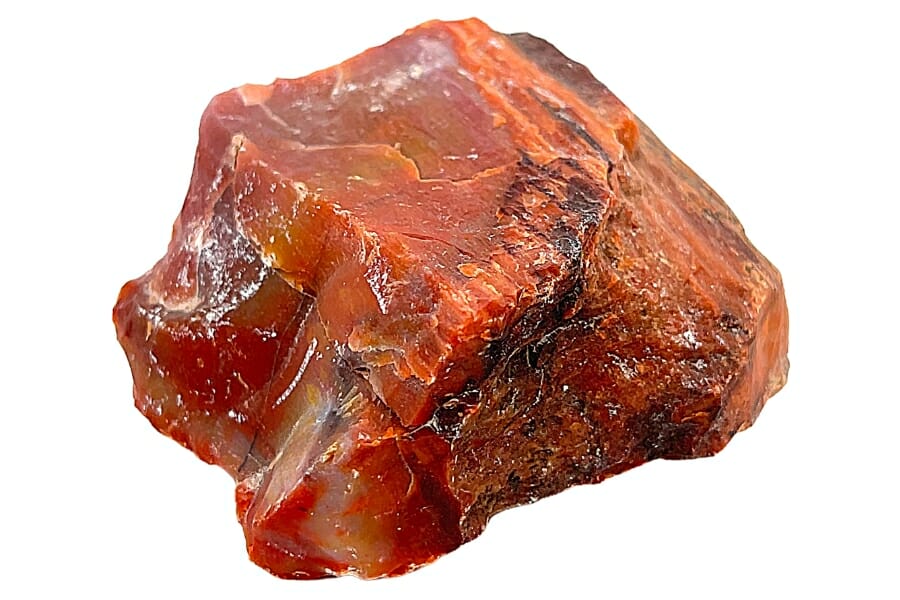
Petrified wood’s hiding places are pretty general, so for better chances of finding one, pay extra attention to the following areas during your adventure:
Rivers and River Banks
Rivers and river banks are prime spots for hunting petrified wood in Missouri and for good reason! As rivers flow, they erode the land, washing away softer soil and uncovering the harder rocks beneath. This means they can reveal petrified wood that’s been hidden underground for millions of years.
River banks are also constantly changing as water levels rise and fall, so there’s always a chance of new finds. These areas are like nature’s conveyor belts, delivering an ever-changing assortment of rocks and fossils right to the surface.
Quarries
Quarries are like giant treasure chests for finding petrified wood! These places are essentially big holes in the ground where rock or minerals have been excavated, often digging deep into Earth’s layers. As workers dig, they might uncover petrified wood that’s been buried for millions of years.
Because quarries expose deeper layers of the Earth, they give us a peek into Missouri’s ancient past. This makes them great spots for finding all sorts of fossils, including petrified wood. As a bonus, the constant digging and moving of the Earth can churn up new finds all the time.
Remember, though, that quarries can be dangerous places and are often on private property, so always get permission before you go exploring.
Streams and Creeks
Just like rivers, streams, and creeks are smaller waterways that erode the soil and rock as they flow, uncovering hidden treasures like petrified wood. As water rushes over and around rocks, it slowly wears them down, revealing different finds.
These bodies of water also move pieces of petrified wood along their paths, depositing them in easily accessible locations, often at bends in the stream or along the banks. That means every rainfall or change in the water level can lead to new discoveries!
Streams and creeks are also often more accessible than larger rivers or quarries, making them excellent locations for younger rockhounds or those just starting their geological journey.
Common Questions About Finding Petrified Wood In Missouri
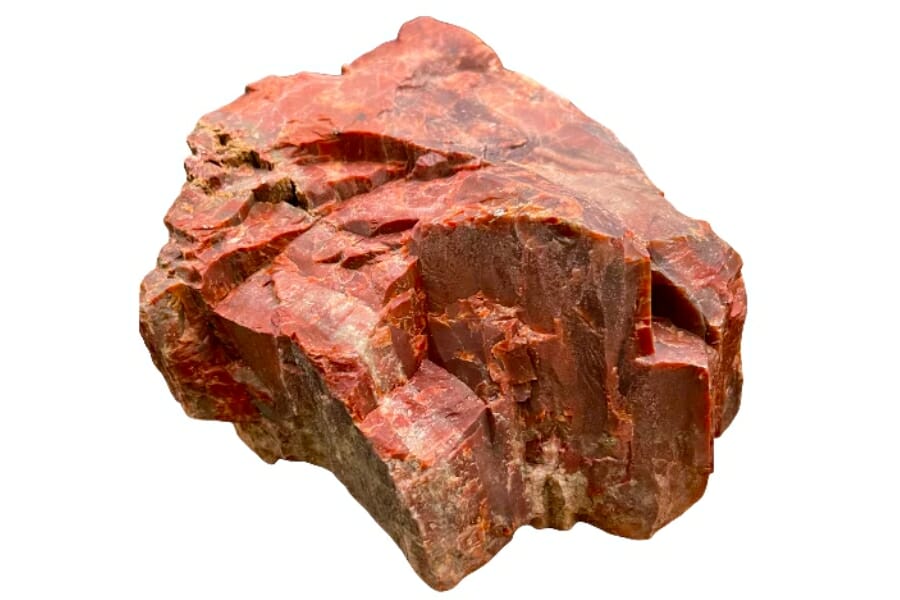
In this section, allow us to answer some of the most commonly-asked questions when it comes to finding petrified wood in Missouri:
How old is Petrified Wood in Missouri
The age of petrified wood in Missouri can vary greatly, but much of it dates back to the Paleozoic Era, which lasted from about 540 million to 250 million years ago. This was a time when life exploded in diversity and complexity, with the first forests springing up across the planet.
In our state, the ancient trees that would become petrified wood were often part of lush swamps and coastal forests, teeming with ferns, horsetails, and primitive conifers. As these plants died, they were buried under layers of sediment. Over millions of years, it turned into stone, resulting in captivating petrified wood.
Can you find Petrified Palm Wood in Missouri?
Petrified palm wood does not naturally occur in Missouri because our geologic history doesn’t include the types of environments where palms typically grew.
Most petrified wood here comes from trees that lived in the state during the Paleozoic era, a time when the climate and environment were very different from the tropical or subtropical settings where palms thrive.
The Best Places To Buy Petrified Wood In Missouri
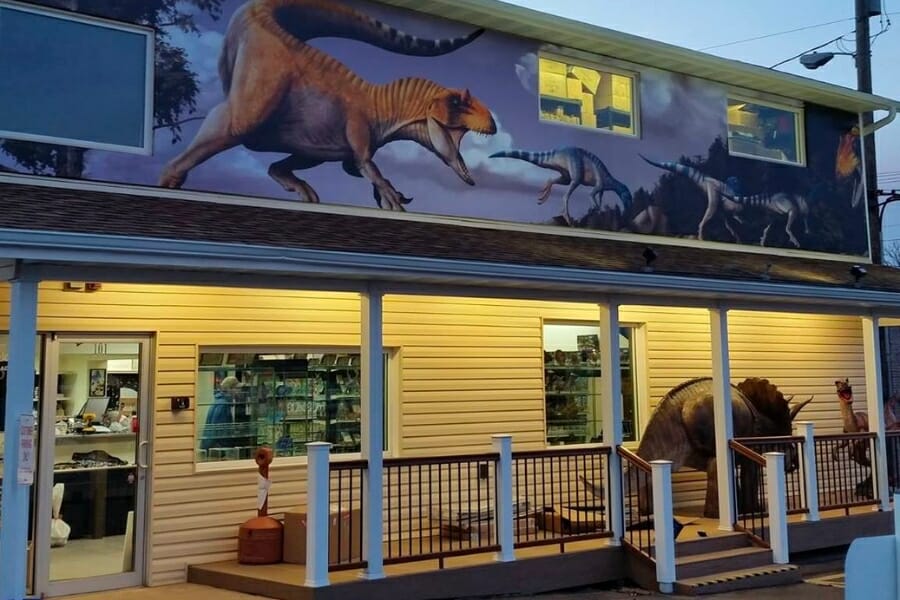
Finding petrified wood in its natural environment sure is worth every effort, but if you don’t have the time and energy needed to go on a full-blast exploration, you can opt to visit our local shops that display and sell them here, like the following:
- Blue Lavender Sky – 1462 N Grant Ave, Springfield, MO 65802
- Fall Creek Rock Shop – 11010 Dillon Outer Rd, Rolla, MO 65401
- Prehistoric Fossils – 101 Veterans Blvd, Branson, MO 65616
- Prospectors Crystals, Rocks, & Gift Shop – 1640 Gravois Rd, High Ridge, MO 63049
- White Light Crystal Shoppe – 115 E Gregory Blvd, Kansas City, MO 64114

